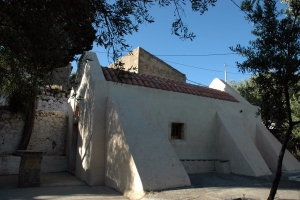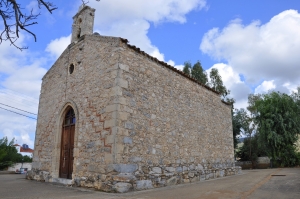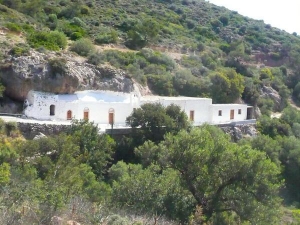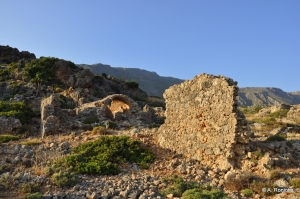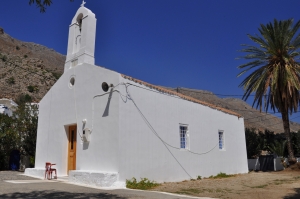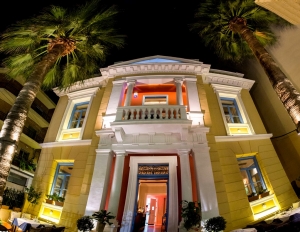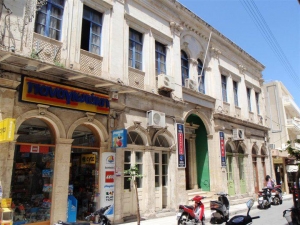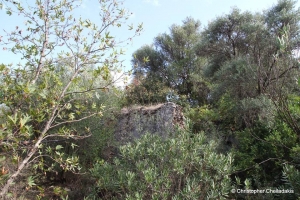The Kato (lower) St. George was founded in 13th century and is adjacent to another newer church of St. George. It is a small single-nave, barrel-vaulted church, with buttresses at the southern wall and its entrance on the west. The openings are adorned with stone reliefs of the time of the Venetian rule.
At the village Kastelli, province Pediada, we meet the very old church of Christ. The temple bears Venetian frescoes of great artistic value.
In a lush green ravine formed between Analipsis and Pefki we meet the former monastery of St. George of Samakidis. The church celebrates on November 3rd and is built in a cave. According to tradition, in 1471 Joseph Samakidis, who lived in the monastery of Panagia Kera by village Pilalimata left his monastery due to pirate raid.
The bay where today's Loutro settlement is built was the port of ancient towns Anopolis and Aradena. This port is mentioned in ancient texts as Phoenix or Katopolis. The gods Zeus and Apollo were worshiped in Phoenix.
In the middle of the settlement of Loutro we meet the beautiful and spacious temple of Panagia, dedicated to Zoodochos Pigi (Life Giving Spring) celebrating five days after Easter. The courtyard has a large Cretan date palm tree and a well with water.
Here we meet an important sample of later Neoclassicism in Heraklion built in 1907 belonging to Chatzidakis family. The building is known as French School because it housed the French Institute of Heraklion in the past. The floor plans are very similar to another well-known building of Crete, the villa of Koundouros at Chania.
It is a wood and stone building with a roof in three sections. The main entrance is set back in a recess in the wall. There are eight arched thresholds on the ground floor, with an equal number of pilasters above. The wide variety of architectural features employed includes cornices with cyma moulding, pilasters, capitals of various types and parapets embellished with rosettes.
One of the most important churches used in the past for burying unbaptized babies is located by Kritsa, at position Koulbado. This temple is also very important as it is a single-aisle temple, probably built in the Byzantine Era (indicated by the typical ceramic bricks met in Byzantine churches).











